The choice of the most popular lenses for Nikon was compiled separately in two price categories. For beginners and fans, manufacturers produce interesting glass with good characteristics. However, the requirements of professionals are somewhat different, and they are willing to pay for impeccable quality. Among the lenses that can be used with Nikon SLR cameras, you can find not only the products of this brand. Although the undisputed leaders are products labeled "NIKKOR", third-party manufacturers make interesting lenses for Japanese cameras.

Content:
The lens of a company to choose
Nikon

In July 2017, the company will celebrate its centenary. In 1917, three Japanese photo equipment manufacturers merged into Nippon Kogaku Kokyo K.K. Now Nikon is a division of the giant Mitsubishi Group, headquartered in Tokyo.
In 2016, it ranks third in the world in the production of photographic equipment and second in the number of cameras sold. At the same time only 26,000 people work in dozens of countries around the world. The main production is concentrated in the Asian region.
Samyang

Samyang Optics Company Limited is a relatively young Korean manufacturer specializing in the manufacture of optics for cameras of various brands. All products are made at the only plant in the city of Masan.
A feature of Samyang lenses is the inability to use auto focus. However, the highest quality optics and reasonable price make their products sought after by the consumer.
Carl zeiss
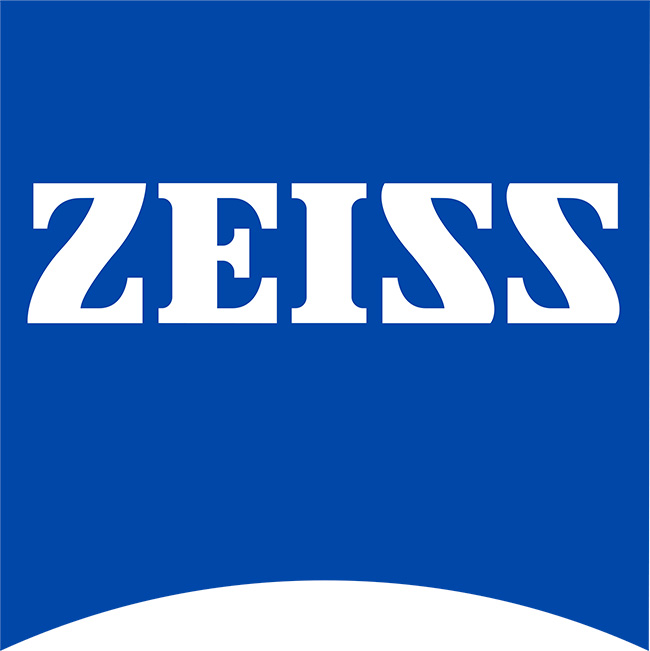
A renowned German manufacturer of cameras and accessories for them, Zeiss AG dates back to 1846. Initially, the workshop produced microscopes, then switched to other optics.
Now it is a giant company, based on the manufacture of optical devices for various purposes. Telescopes, measuring instruments, lenses for telephone cameras and of course Zeiss lenses are of impeccable quality. Although the price of the product is appropriate.
The best lenses for fans
When buying accessories, novice photographers are looking for the best balance between price, quality and functionality. Manufacturers go to meet the demands, providing a whole line of photographic lenses for fans.
Nikon 50mm f / 1.8G AF-S Nikkor - the best inexpensive fix
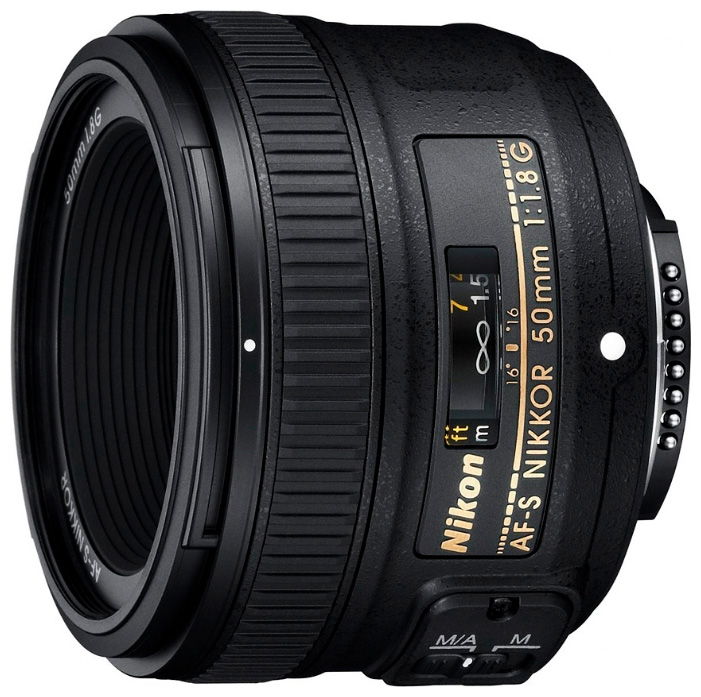
This glass allows you to shoot a variety of scenes with high quality. Portraits and reports, subject and subject shooting - all genres will be conquered by an amateur in whose hands will be Nikon 50mm.
A built-in focusing motor with fast autofocus will not only make it possible to capture dynamic scenes, but also help save battery power and take more shots without recharging.
Its design provides for use on all Nikon SLR cameras, from crop cameras for amateurs to full-format devices.
The advantages of the Nikon 50mm include:
- large luminosity;
- the minimum distance to the object is 45 cm;
- reliability and two years manufacturer warranty;
- a high resolution;
- contrast pictures.
The disadvantages are only fixed focal length. Shooting "fifty dollars" in a small room will be problematic.
This is the most popular glass from the company Nikon is in great demand. Nikon 50mm should be in the collection of every lover who wants to consistently receive great shots.
The best landscape lens for amateur Samyang 14mm f / 2.8
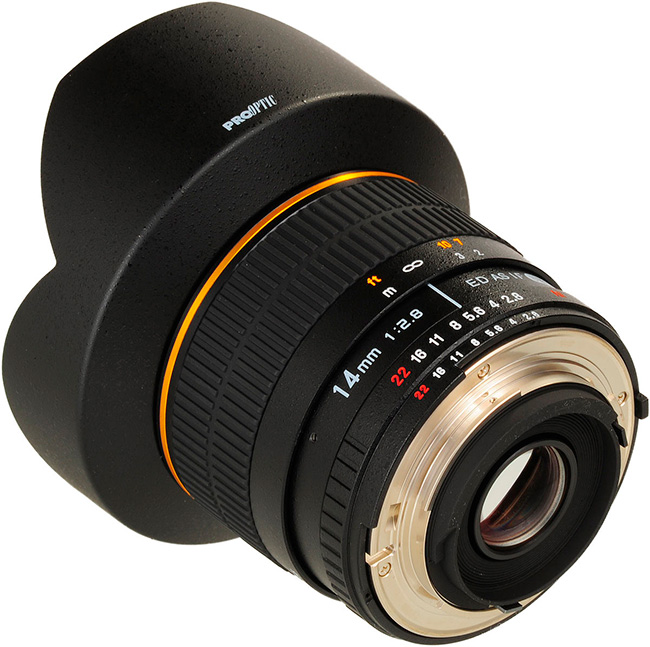
Korean manufacturer made a great glass for lovers who are fond of shooting landscapes.Focal length of 14 mm will capture a large space in the frame.
Even an inexpensive camera equipped with Samyang 14/2 .8 will give simply amazing shots. Although it does not have a focusing motor, but at this focal length at aperture of 4.0, all objects that are further than two meters will fall into the zone of sharpness.
Become the best wide-angle lens for fans of Samyang 14mm f / 2.8 help:
- image sharpness;
- natural color reproduction;
- effective anti-reflective coating;
- built-in hood;
- convenient focal length.
The disadvantages include a large weight, 530 g. It is due to the fact that in the optical scheme there are no plastic elements, all lenses are made of glass.
Photo-landscape painters are happy to use Samyang 14mm f / 2.8 when shooting in different lighting conditions, it turns out excellent, sharp and rich shots.
The most inexpensive AF-P DX NIKKOR 18-55 mm F / 3.5-5.6G lens
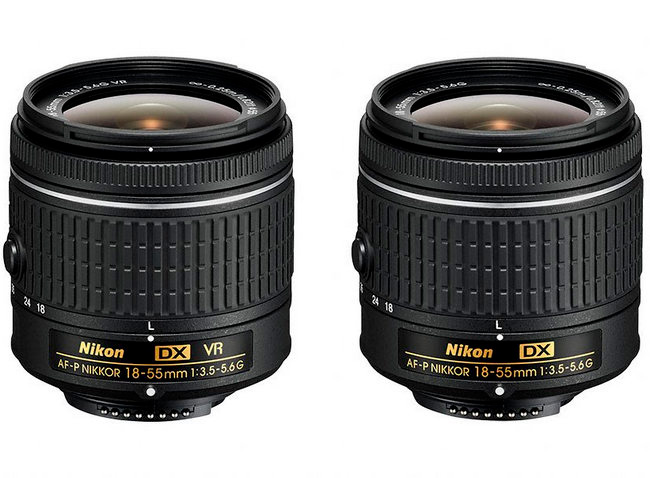
They are equipped with a significant number of entry level DSLRs from Nikon. Despite the affordable price, the zoom lens allows you to take good shots. A three-fold zoom gives you the opportunity to shoot landscapes and portraits, quick focus easily captures dynamic scenes. And all this at a very low cost.
In addition, the advantages of NIKKOR 18-55 consider:
- noiseless motor;
- smooth zoom;
- vibration suppression system;
- good detail of the image;
- ease of embellishment;
- little weight.
The disadvantages include the quality of materials.
To reduce the weight and price, the manufacturer has manufactured many parts using modern plastics. Although it does not affect the performance properties, but reduces strength in case of accidental impacts.
The prevalence of NIKKOR 18-55 has led to a certain disregard of users, who condescendingly respond to the quality of the image of this glass. The reason lies in the fact that amateurs do not always use all the possibilities of technology laid by the manufacturer.
The best TV for the amateur AF-P DX NIKKOR 70-300 mm F / 4.5-6.3G ED
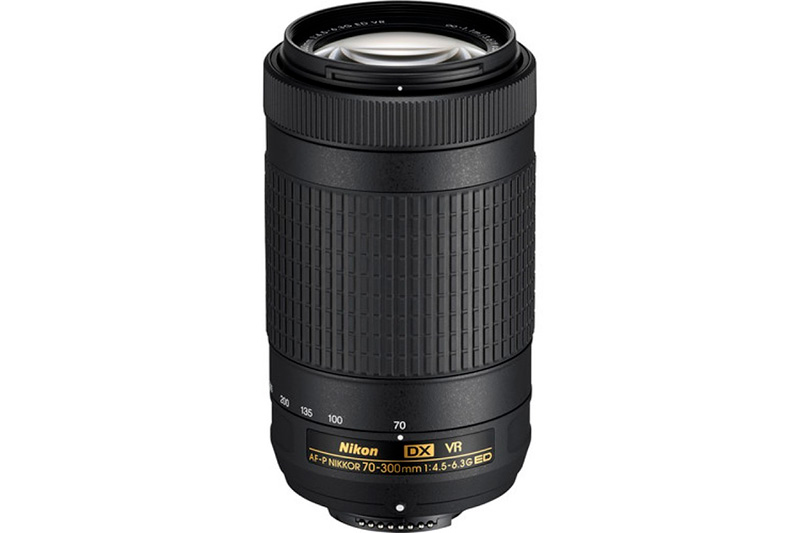
For those who want to shoot distant objects, Nikon offers a zoom with a focal length from 70 to 300 mm. He entered the rating of the best lenses for Nikon cameras because of its versatility. They can take a shy animal, which is at a distance of ten meters, or take a group photo of several friends at a distance of five steps.
At the same time, it is endowed with other virtues:
- Vibration reduction system compensates for four exposure steps;
- use of lenses with reduced light diffusion;
- smooth zooming;
- small for this level of equipment weight.
The disadvantage is the minimum aperture of 4.5, in poor lighting it will be problematic to take a good picture.
Most often, customers positively respond to the quality of images taken with the AF-P DX NIKKOR 70-300 mm. They can take a picture of something that is physically inaccessible to other devices.
The best Nikon lenses for professional photographers
When choosing a technique, photography professionals first of all pay attention to the image quality, then such parameters as price and ergonomics go. Since a professional lens has increased reliability and has been used for decades, expensive equipment does not require regular replacement. It was this that caused the price of tens and hundreds of thousands of rubles to find their customers.
Best Professional Lens 2016 - NIKKOR 70-200MM F / 2.8E FL ED VR
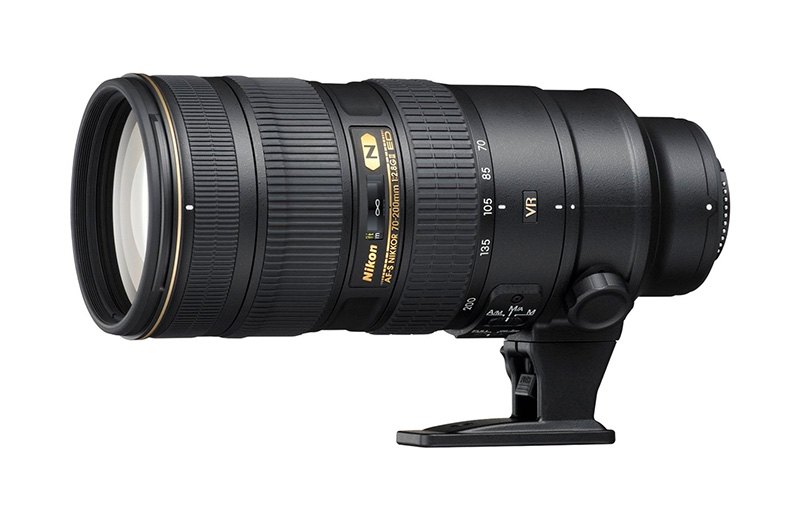
Since the 80s of the 20th century, the company has been manufacturing lenses with a focal length of 80-200 mm, specifically for professionals, then a new 70-200 was developed, which in 2016 received a new version. The production of cameras with huge resolution required an update of the professional zoom.
Now the photographer will be able to effectively use each megapixel, because in NIKKOR 70-200MM F / 2.8E FL ED VR is available:
- nanocrystalline coating;
- lenses from low-dispersed glass;
- A new vibration reduction system that adapts to the shooting conditions;
- fluorite elements;
- improved ergonomics.
The disadvantage of NIKKOR 70-200 can be called the impossibility of its use in some types of shooting, they will not be able to make landscape and macro.
Reviews of the first lens buyers say that it is a convenient glass that allows you to take photos of professional quality with a minimum of effort.
The best lens for artistic photography. ZEISS Milvus 50 mm F / 1.4
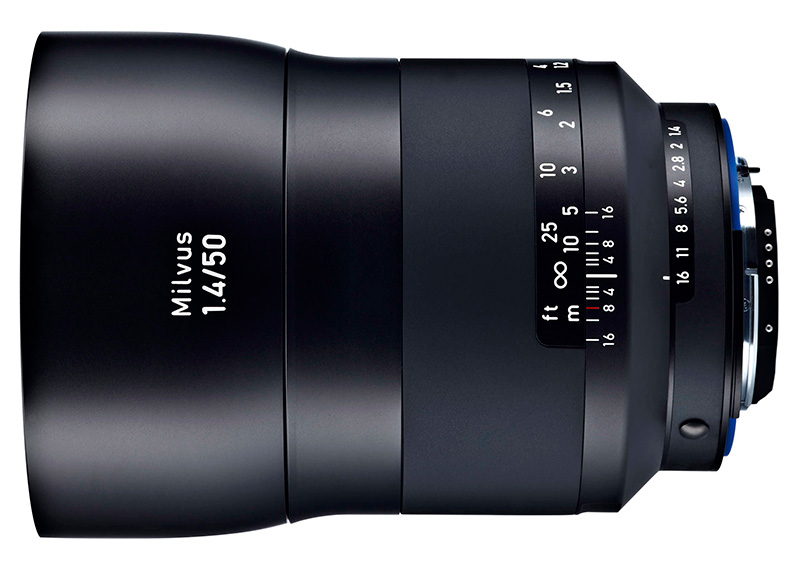
Among professionals, Carl Zeiss products are valued for the artistry of the received personnel. It is difficult to explain in words; visual perception does not always have a logical explanation. Understand the airiness of the picture can only see it. That is why Zeiss lenses are very expensive, although they are not equipped with autofocus.
The advantages include:
- monolithic construction of metal and glass;
- ease of management;
- modern front lens illumination;
- build quality;
- high dynamic range;
- color rendition.
Among the shortcomings can be identified only large dimensions and heavy weight, which reaches 930 g.
Reviews of the lens ZEISS Milvus 50 mm speak about the highest image quality and usability.
The best reportage lens for Nikon - Nikkor 24-70mm f / 2.8G ED AF-S
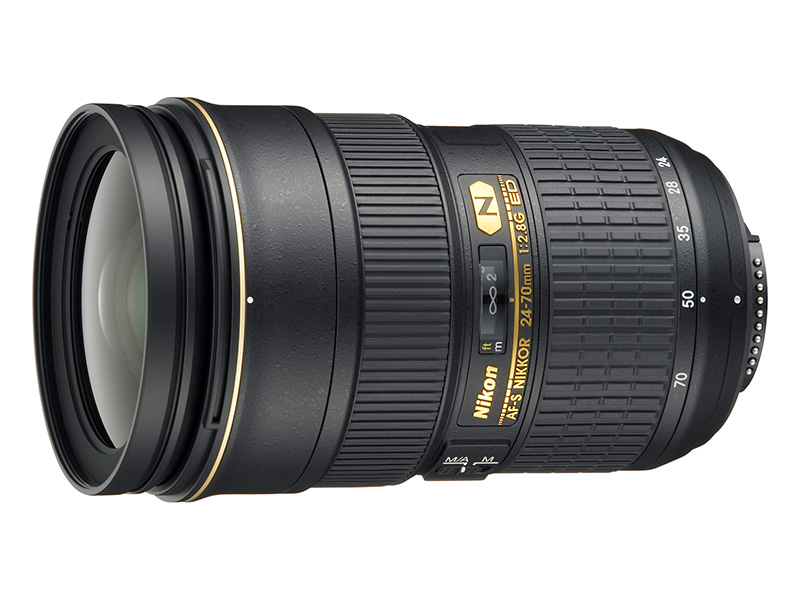
Shooting weddings and reports requires a special lens, which is the “short” zoom with a focal length of 24-70 mm. Powerful autofocus instantly clings to and holds the target steadily, and glass lenses transmit the highest quality image to the matrix.
Professionals point out the following benefits:
- reliability;
- build quality;
- a constant aperture of 2.8 at any focal lengths;
- ergonomics;
- stability of focus.
The lens has a disadvantage, it is high weight. Engineers could not replace glass lenses with plastic without loss of image quality, so the Nikkor mass of 24-70mm f / 2.8G approaches one kilogram.
Reviews of the popular 24-70mm glass talk about its reliability and ability to withstand any weather conditions, from heat to heavy rain.
What lens to buy for a Nikon DSLR camera
1. To understand all the subtleties of photography and get beautiful pictures with minimal investment, Nikon 50 mm with a diaphragm 1.8 and an ultrasonic motor will do.
2. Excellent landscape, with good resolution and color rendering can be done with a wide-angle Samyang 14 mm.
3. The cheapest, easiest and easiest to manage 18-55 zoom from a Japanese manufacturer is nice to take on long journeys.
4. For shooting remote subjects, reviews recommend buying the Nikon 70-300 telezum.
5. Professional glass, characterized by the versatility of the NIKKOR 70-200 mm with a constant aperture of 2.8, will assist in working with distant objects and during portrait photography.
6. For a leisurely artistic photograph, Carl Zeiss Milvus 50mm F / 1.4 will be simply indispensable.
7. Obligatory glass in the set of professional photo reporter - Nikon's 24-70mm f / 2.8G will help in the form of a reportage to capture interesting moments in the best quality.
It will be interesting to friends too










